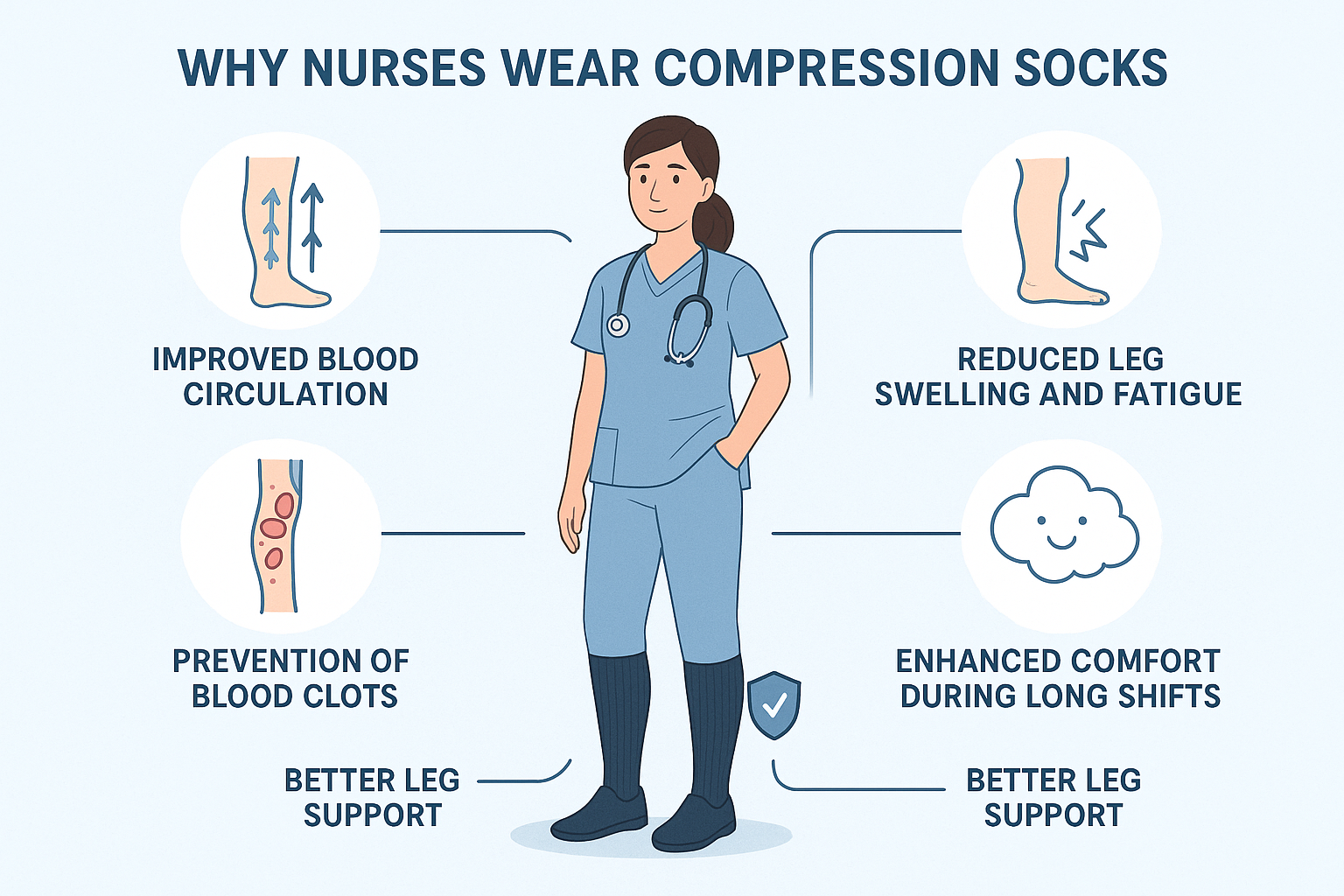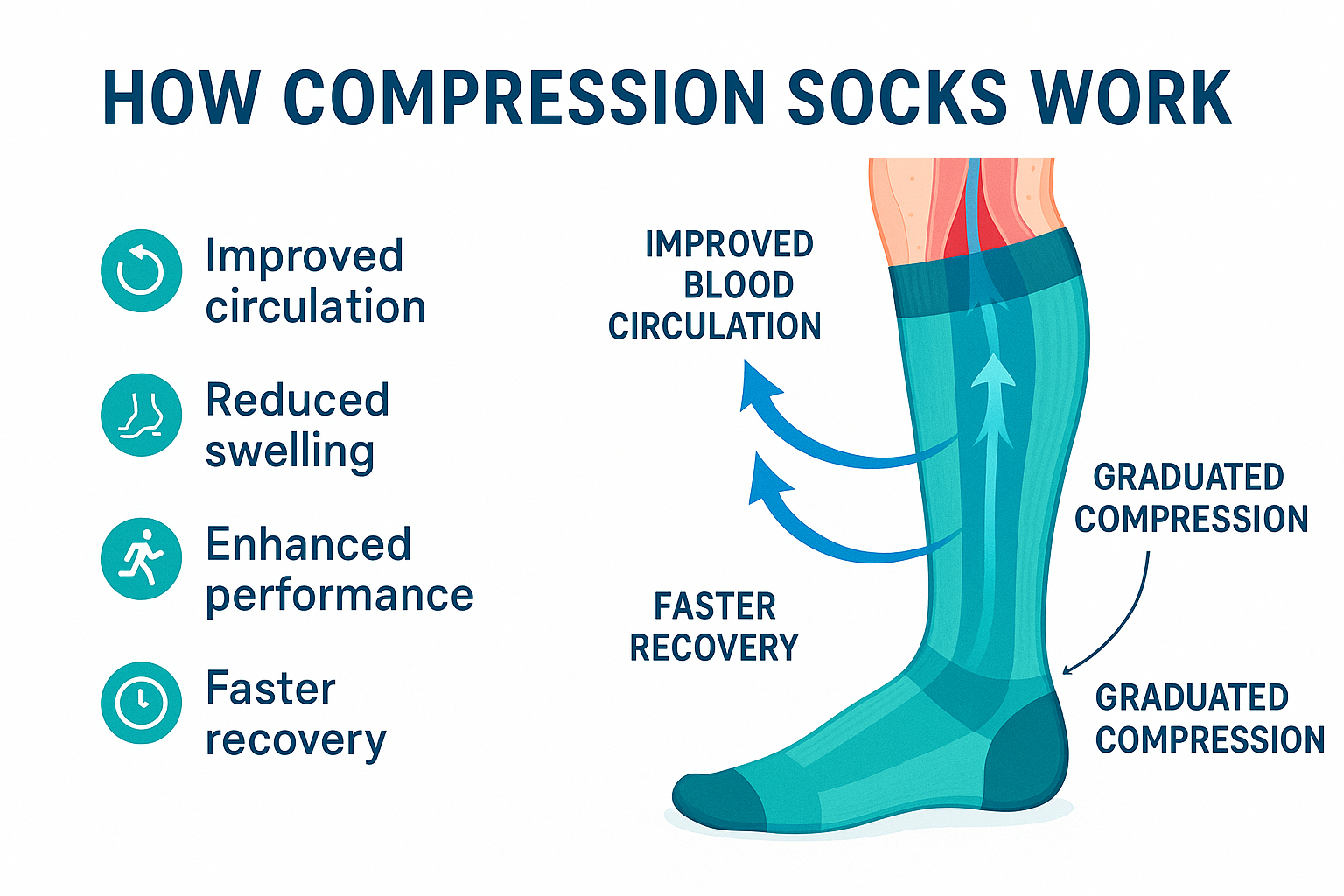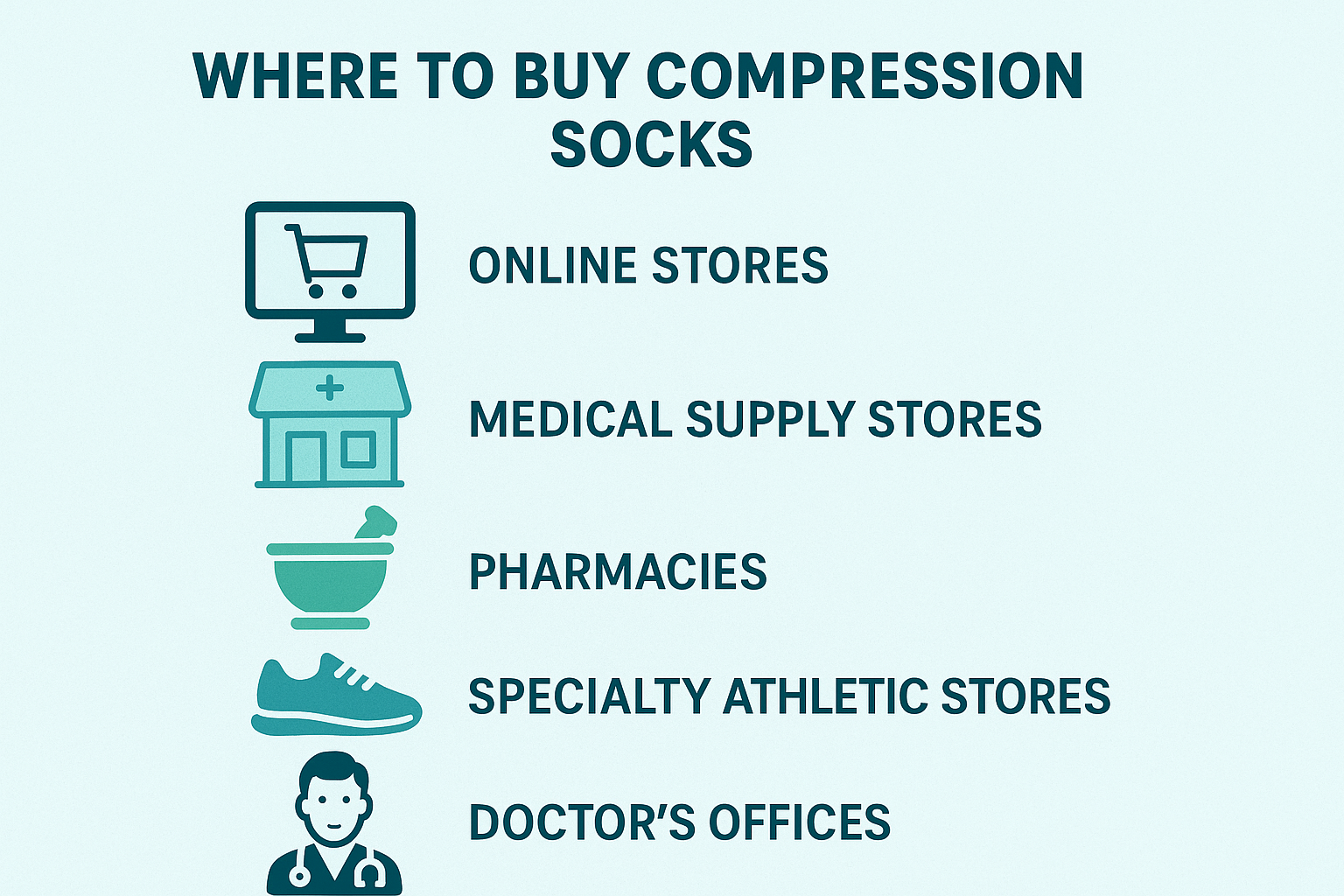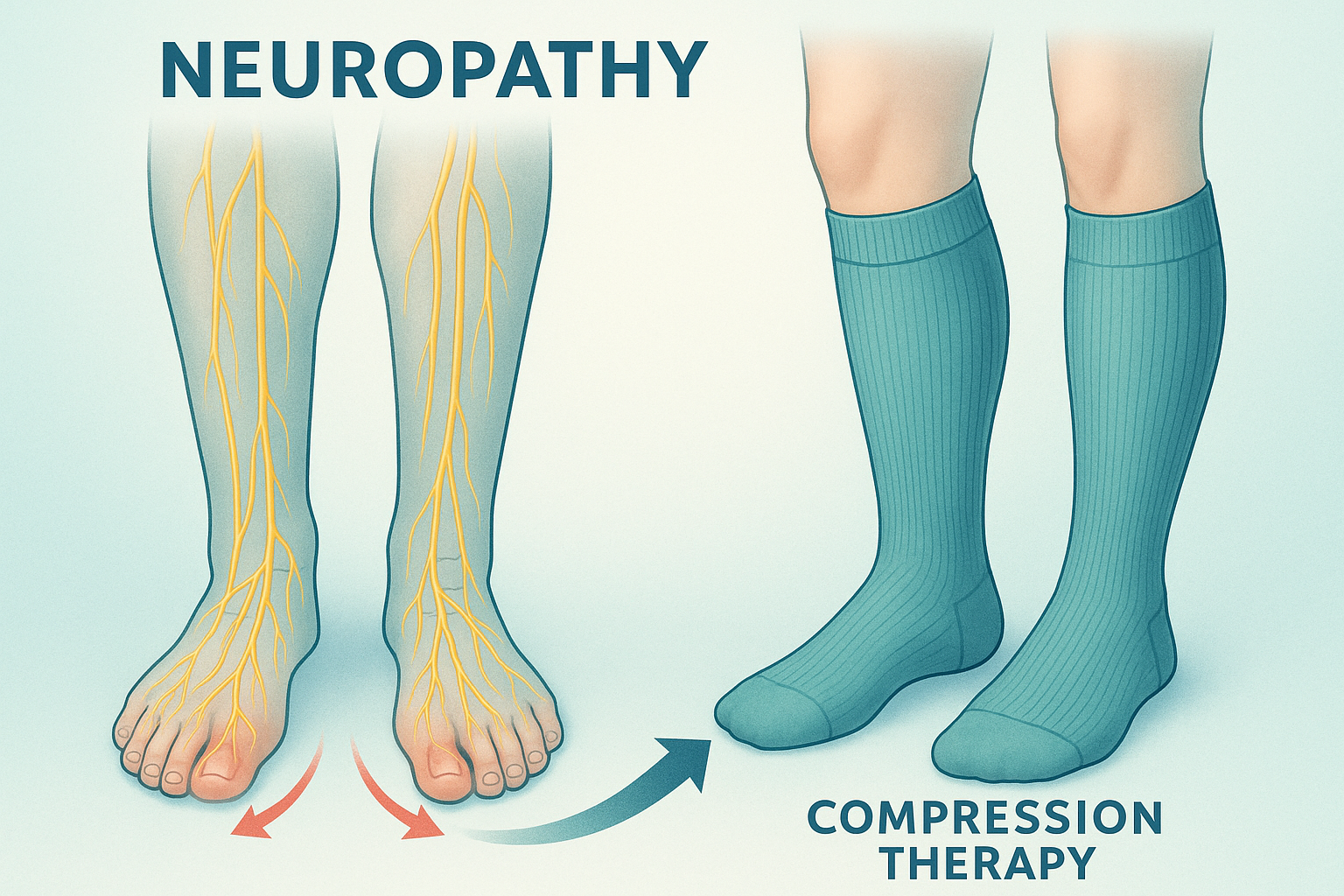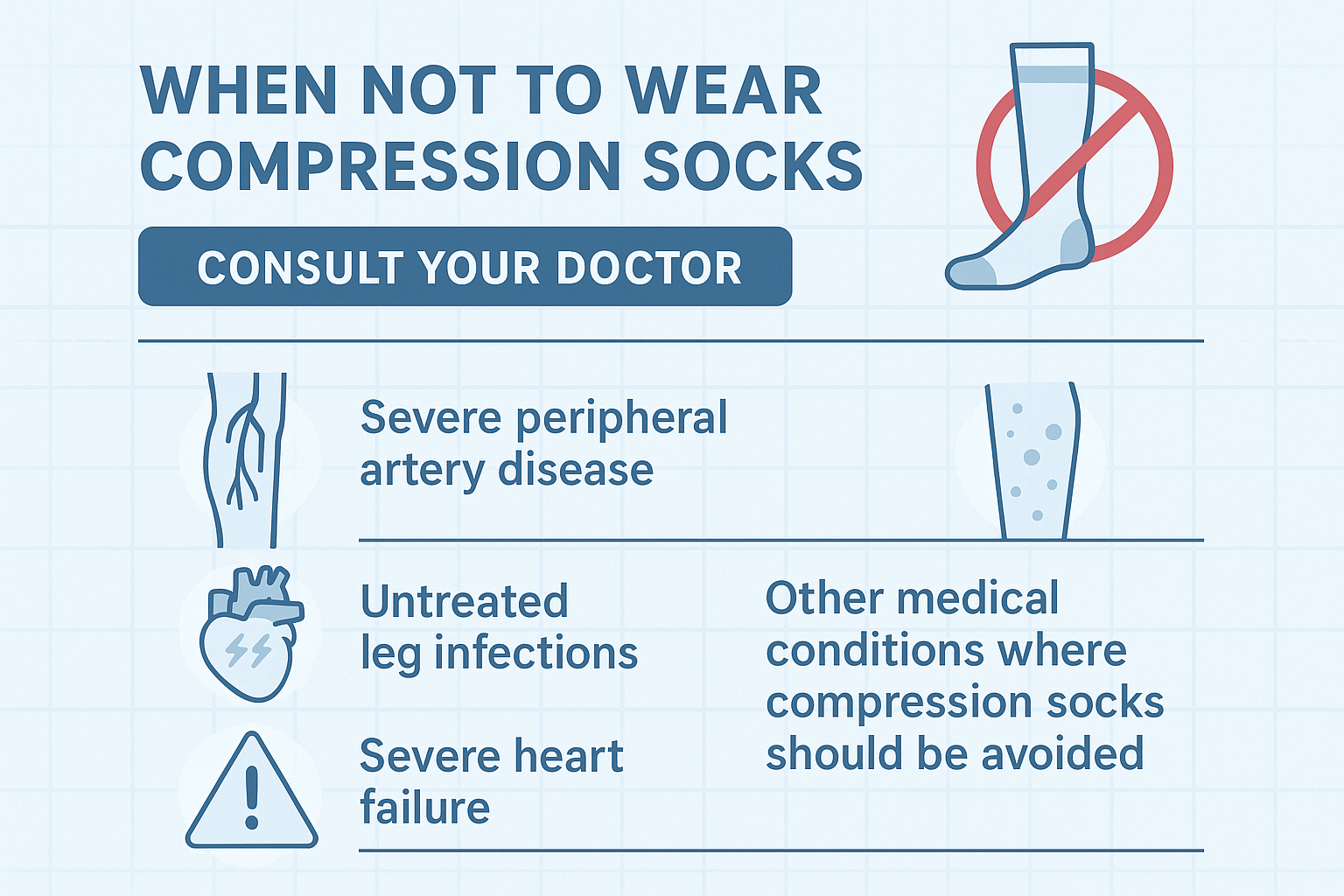
Who Should Not Wear Compression Socks: Important Safety Guidelines
Compression socks are widely praised for improving circulation, reducing swelling, and preventing fatigue. But despite their many benefits, they aren’t suitable for everyone. Knowing who should not wear compression socks is just as important as knowing when to wear them.
In this comprehensive guide, we’ll explain the conditions, symptoms, and circumstances where compression socks may not be safe — and what to do instead. Understanding these limits ensures you use them effectively and protect your leg health long-term.
How Compression Socks Work
Compression socks apply gentle, graduated pressure to your legs. This pressure is tightest at the ankle and gradually loosens up the calf. The goal is to help blood move upward toward your heart and reduce pooling in the lower limbs.
They’re beneficial for people who sit or stand for long hours, travelers, athletes, and those recovering from surgery. However, for individuals with certain circulation or skin issues, that same pressure can sometimes cause more harm than good.
Who Should Not Wear Compression Socks
While compression socks are safe for most people, there are several situations where wearing them may be unsafe or ineffective. If you fall into one of these categories, talk to your doctor before using compression therapy.
1. People with Peripheral Artery Disease (PAD)
Peripheral Artery Disease (PAD) occurs when plaque buildup narrows or blocks the arteries that carry blood to your legs. Compression socks work by applying pressure to veins — but if your arteries are already restricted, that added pressure can further limit oxygen delivery to tissues.
Why to avoid: Compression may worsen symptoms like pain, numbness, or skin discoloration in the legs.
What to do instead: Ask your healthcare provider about safe alternatives for improving circulation, such as gentle movement exercises or supervised physical therapy.
2. People with Severe Peripheral Neuropathy
Peripheral neuropathy causes numbness and loss of sensation in the legs and feet, often due to diabetes or nerve damage. When you can’t feel your legs properly, you might not notice if your compression socks are too tight — leading to potential skin injury or circulation issues.
Why to avoid: Decreased sensation increases the risk of pressure injuries, skin breakdown, and ulcers.
What to do instead: Consult your doctor for medical-grade compression garments designed for sensitive skin and lower pressure levels. Read our related guide, Do Compression Socks Help Neuropathy?
3. People with Severe Skin Conditions or Infections
If you have open sores, dermatitis, cellulitis, eczema, or any skin infection, wearing compression socks can trap moisture and bacteria against your skin, worsening the condition.
Why to avoid: Tight-fitting socks can irritate inflamed skin, slow healing, or cause infection to spread.
What to do instead: Allow your skin to heal first. Once cleared by a dermatologist or physician, you can reintroduce compression gradually with breathable, hypoallergenic materials like those found in Green Drop Compression socks.
4. People with Congestive Heart Failure (CHF)
In advanced congestive heart failure, the heart struggles to pump blood effectively. Compression socks can force more blood toward the heart, which may overwhelm it and worsen fluid buildup in the lungs.
Why to avoid: Extra venous return can increase pressure on the heart, leading to shortness of breath or swelling.
What to do instead: Always seek medical advice before wearing compression garments if you have heart failure. Your doctor may recommend lighter compression or alternative therapies.
5. People with Severe Leg Deformities or Poor Fit
Compression socks that don’t fit properly — especially in individuals with irregular leg shapes or swelling — can cause more harm than good. They can bunch up, restrict circulation, or leave red marks that indicate too much pressure.
Why to avoid: Ill-fitting socks can cause uneven compression, cutting off blood flow in certain areas.
What to do instead: Choose compression socks with stretchable fabric and multiple size options. Proper fit ensures safe and effective support. Green Drop Compression offers flexible sizing designed for comfort and daily wear.
6. People with Ischemic Disease or Arterial Ulcers
People suffering from severe ischemic disease or open arterial ulcers should not wear compression socks without medical supervision. Restricting blood flow in already oxygen-deprived tissues may delay healing or cause tissue damage.
Why to avoid: Compression may further reduce blood supply to critical tissues, increasing the risk of necrosis.
What to do instead: Use physician-recommended wound care and circulation treatments before considering compression therapy.
7. People with Allergies to Synthetic Fabrics
Although rare, some people have allergic reactions to nylon, spandex, or latex — materials often used in compression socks.
Why to avoid: Allergic contact dermatitis can cause itching, redness, or blistering.
What to do instead: Choose hypoallergenic, latex-free compression socks or those made with natural fibers and moisture-wicking materials.
When Compression Socks Are Safe — and Highly Effective
For most people, compression socks are an excellent way to boost circulation and reduce swelling. You can safely wear them if you:
- Stand or sit for long hours at work
- Travel frequently or take long flights
- Exercise or play sports regularly
- Experience mild leg swelling or fatigue
- Are pregnant or recently postpartum
If you fall into any of these categories, you can benefit from wearing Green Drop Compression socks daily to maintain leg health and comfort.
How to Use Compression Socks Safely
If you’ve been cleared by a doctor to wear compression socks, here are a few safety guidelines to follow:
- Measure accurately: Take calf and ankle measurements to find the right fit.
- Choose the right compression level: Most people start with 15–20 mmHg for daily wear.
- Put them on in the morning: Legs are least swollen right after waking up.
- Remove them at night: Unless prescribed otherwise, remove compression socks before bed.
- Check skin daily: Look for redness, irritation, or marks that indicate poor fit.
Following these steps ensures compression socks work effectively without causing unwanted pressure or irritation.
Signs You Should Stop Wearing Compression Socks
If you notice any of the following symptoms while wearing compression socks, remove them immediately and consult a healthcare provider:
- Persistent numbness or tingling
- Skin discoloration or sores
- Excessive tightness or pain
- Swelling that worsens instead of improving
These are indicators that your socks are too tight, the wrong compression level, or not suitable for your condition.
FAQs: Who Should Not Wear Compression Socks?
Are compression socks bad for certain people?
Yes. People with arterial circulation problems, severe neuropathy, open leg wounds, or advanced heart failure should avoid compression socks unless prescribed by a doctor.
Can wearing compression socks be harmful?
If worn incorrectly or by people with poor arterial circulation, compression socks can restrict blood flow and cause tissue damage. Always ensure a proper fit and consult your physician if you have health concerns.
Should people with diabetes wear compression socks?
Yes — but only mild compression (8–15 mmHg or 15–20 mmHg) and under medical guidance. People with diabetic neuropathy must inspect their feet daily to avoid unnoticed skin damage.
Can compression socks cause blood clots?
No, properly fitted compression socks prevent blood clots by improving circulation. However, if worn incorrectly or too tight, they could impair blood flow and increase risk for some individuals with arterial disease.
Can you sleep in compression socks if you have circulation problems?
Most people should remove compression socks before bed. If you have circulation issues, only wear them overnight under medical supervision. Learn more in our guide: Can You Sleep in Compression Socks?
Related Guides
Final Thoughts: When in Doubt, Talk to a Professional
Compression socks offer incredible benefits for circulation, recovery, and comfort — but they’re not for everyone. People with poor arterial flow, severe neuropathy, open wounds, or advanced heart failure should avoid wearing them unless prescribed by a doctor.
For most people, though, compression socks are a safe and effective way to boost leg health and energy. Choose high-quality, medical-grade designs like those from Green Drop Compression for reliable comfort and support throughout your day.
Explore our collection of compression socks to find your ideal fit and experience the difference for yourself.



